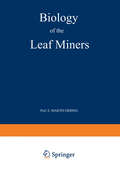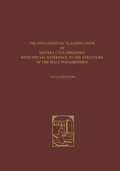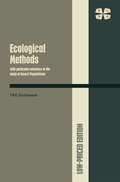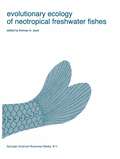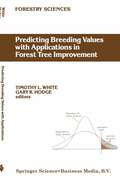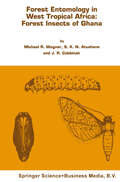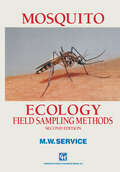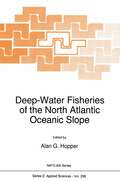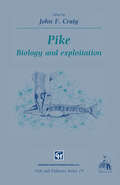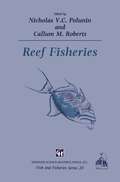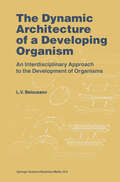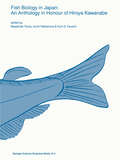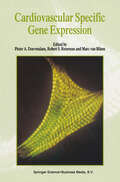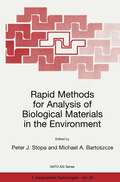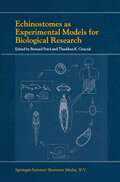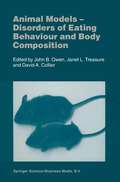- Table View
- List View
Biology of the Leaf Miners
by E.M. HeringThe development of specialised feeding habits during the course of time by human beings is paralleled in the majority of animals, in particular have developed special peculiarities, and insect larvae which in most cases are quite characteristic of the species concerned. This applies especially to phytophagous insect larvae, and anyone with the requisite experience can say with a fair degree of certainty which insect larva is responsible for any damage to be found on a plant. It leaves behind a definite "feeding pattern" which might be compared to a "visiting card" on which the genus and species are marked in runic characters. Whoever has learned to read the runes can readily determine who has been feeding on the affected spot, solely on the basic of the "visiting card" left behind. From the known factors - the name of the plant and the type of feeding patter- and after some study of the various types of plant infestation, both the genus and species of the larva producing the feeding pattern can be worked out without difficulty. The importance of "feeding pattern investigation" has now far outstripped the successes to be obtained by normal collecting. Previously, when wishing to list the species of insects present in any given locality they were caught with the net, by sugaring and other methods. This always resulted in a very defective "list" of the insects in fact existing in the locality concerned.
The Phylogenetic Classification of Diptera Cyclorrhapha: With Special Reference to the Structure of the Male Postabdomen (Series Entomologica #8)
by G.C. GriffithsEvolutionary Ecology of Neotropical Freshwater Fishes (Developments in Environmental Biology of Fishes #3)
by T. M. ZaretIn August of 1980, near the whistlestop of Maltby, Surely, we would plead, the U. S. A. , a wealthy Washington, Don Stewart and I met in my rented nation,can fund our proposal if only as a gesture of house trailer to sketch a proposal to the National support to foreign scientists. Somehow, however, Science Foundation. Our goal was simple: to re we seemed to miss deadlines, fall in-between the quest from the Foundation air fare and per diem for cracks, and miss the right connections. It was not approximately 20 Latin American scientists to at until May, 1982, several weeks before the proposed tend a workshop entitled the 'Systematics and workshop, that we realized we could not find any Evolutionary Ecology of Neotropical Freshwater funds for bringing Latin American scientists to the Fishes' that would follow the 1982 ASIH (Ameri U. S. The programs for the meeting had been can Society of Ichthyologists and Herpetologists) printed, the meal coupons, banquet tickets, and all meeting. We had presented an initial outline for our the other amenities that come with a professional proposal to a number ofcolleagues in . June of 1980 meeting were ready, but we had no Latin American at the ASIH meeting at Texas Christian University ichthyologists as participants. Some abstracts were in Fort Worth, Texas. The steering committee for being received by the program organizers, but the workshop, consisting of a dozen senior scien without U. S.
Predicting Breeding Values with Applications in Forest Tree Improvement (Forestry Sciences #33)
by T.L. White G.R. HodgeIn most breeding programs of plant and animal species, genetic data (such as data from field progeny tests) are used to rank parents and help choose candidates for selection. In general, all selection processes first rank the candidates using some function of the observed data and then choose as the selected portion those candidates with the largest (or smallest) values of that function. To make maximum progress from selection, it is necessary to use a function of the data that results in the candidates being ranked as closely as possible to the true (but always unknown) ranking. Very often the observed data on various candidates are messy and unbalanced and this complicates the process of developing precise and accurate rankings. For example, for any given candidate, there may be data on that candidate and its siblings growing in several field tests of different ages. Also, there may be performance data on siblings, ancestors or other relatives from greenhouse, laboratory or other field tests. In addition, data on different candidates may differ drastically in terms of quality and quantity available and may come from varied relatives. Genetic improvement programs which make most effective use of these varied, messy, unbalanced and ancestral data will maximize progress from all stages of selection. In this regard, there are two analytical techniques, best linear prediction (BLP) and best linear unbiased prediction (BLUP), which are quite well-suited to predicting genetic values from a wide variety of sources, ages, qualities and quantities of data.
Forest entomology in West Tropical Africa: Forest insects of Ghana
by Michael R. Wagner J.R. CobbinahIt is a great honor and indeed a privilege for me to write the Foreword to this book, the first of its kind from the Forest Products Research Institute The study of forest insects is now becoming a matter of great concern to many people all over the world because insects damage the already depleted forests and forest resources. In Ghana very little interest was shown in the insects of forest trees and products. But as forest practices have become more intensive so also have the pests on the crops increased and the damage caused increased to alarming proportions. Foresters are now becoming in creasingly aware of the immense havoc that some of these insects can cause. To aid the fight against the pests they have to be fully identified and studied so that effective control measures can be implemented. It is in an effort to bridge this gap in our knowledge that one welcomes this book by Professor Michael R. Wagner, Dr. S.K.N. Atuahene and Dr.
Chemical, Microbiological, Health and Comfort Aspects of Indoor Air Quality - State of the Art in SBS (Eurocourses: Chemical and Environmental Science #4)
by Helmut Knöppel Peder WolkoffInterest in indoor air quality (IAQ) is growing at public, political and scientific levels. Complaints about poor IAQ, associated with acute symptoms such as mucous irritation, headaches and bad odor occur frequently, particularly in the office environment, where typical patterns of symptoms often occur, leading to the coining of the term `Sick Building Syndrome'. In the present book, internationally known experts address the following issues: the dynamics of the indoor environment and strategies for indoor measurement chemical and microbiological pollution, important species, sources and detection methods effects of indoor pollution, in particular sensory irritation, including odor airway, eye and skin irritation by organic indoor pollutants and their assessment immune effects, including allergic sensitization chemical hyper-responsiveness controlled human reactions to organic pollutants building investigation: approaches and results source characterization and control criteria, norms and techniques in indoor air pollution, and regulatory aspects. The complex, multifactorial nature of sick building syndrome requires multidisciplinary collaboration from very diverse fields. It is evident that communication between researchers coming from very different areas, all speaking their own language, is a difficult task. This book, presenting as it does the state of the art on sick buildings and how to cure them, is a sound foundation on which to build for the future.
Mosquito Ecology: Field sampling methods
by S.W. ServiceNumerous methods have been devised to catch mosquitoes and many approaches employed to study their ecology and behaviour but until the first edition of this book in 1976 there was no comprehensive guide to mosquito ecology. New work on the topic has meant that this completely revised and updated second edition was required.
Deep-Water Fisheries of the North Atlantic Oceanic Slope (NATO Science Series E: #296)
by Alan G. HopperA comprehensive review of current knowledge of the deep-water fishes of the North Atlantic and their exploitation. Individual countries and research institutions have carried out their own investigations and surveys in the past, but these results have rarely been coordinated, nor has there been a proper sharing of results and data. But there is a need to assess the total size of the deep-water stocks and the extent to which they can safely be exploited. The book also contains a number of papers describing present and past research and the present exploitation of resources, together with papers on the technical problems encountered in capturing and processing these fishes. An assessment of the requirements for future research is presented.
Pike: Biology and exploitation (Fish & Fisheries Series #19)
by J. CraigPike and related fish form an important part of aquatic ecosystems and are also commercially very valuable. This title provides full coverage of the biology, ecology and exploitation of this important group of fish and will be invaluable for fisheries scientists, fish biologists, aquatic scientists, ecologists and environmental scientists.
Reef Fisheries (Fish & Fisheries Series #20)
by Polunin Nicholas V. C. C. RobertsReef ecosystems extend throughout the tropics. Exploited by small-scale fishers, reefs supply food for millions of people, but, worldwide, there are growing worries about the productivity and current state of these ecosystems. Reef fish stocks display many features of fisheries elsewhere. However, habitat spatial complexity, biological diversity within and among species, ecosystem intricacy and variable means of exploitation make it hard to predict sustainable modes and levels of fishing.
The Dynamic Architecture of a Developing Organism: An Interdisciplinary Approach to the Development of Organisms
by L.V. BeloussovFor anybody capable of an emotional response to it, any view of a developing organism should give birth to a feeling of amazement and even admiration, whether this development is seen directly, or in the form of a time lapse film, or even if mentally reconstructed from a series of static images. We ask ourselves how such seemingly primitive eggs or pieces of tissue, without any obvious intervention from outside, so regularly transform themselves into precisely constructed adult organisms. If we try to formulate what amazes us most of all about development, the answer will probably be that it is the internal capacity of developing organisms themselves to create new structures. How, then, can we satisfy our amazement in ways that are more or less reasonable, as well as scientifically valuable? This depends, first of all, on what position we choose to regard embryonic development as occupying among other structure creating processes, even including human activities. On the one hand, one might regard the development of organisms as a highly specialized class of processes, unique to themselves and alien to the general laws of nature, or at least not derivable from them and more akin to the deliberate acts of our own human behaviour. In that case our task would become reduced to a search for some specific 'instructions' for each next member of such a class. Whether in an overt or hidden form, some such ideology seems to dominate in present day developmental biology.
Fish biology in Japan: an anthology in honour of Hiroya Kawanabe (Developments in Environmental Biology of Fishes #18)
by Masahide Yuma Izumi Nakamura Kurt D. FauschFish biology in Japan: an anthology in honour of Hiroya Kawanabe (Developments in Environmental Biology of Fishes #18)
by Masahide Yuma Izumi Nakamura Kurt D. FauschThe Cyst Nematodes
by S. B. SharmaWhen Franklin published her book on cyst nematodes in 1951, the cyst nematodes were already known as serious pests of brassicas, cereals, potatoes and sugar beets. However, at that time this group of nematode, with about 12 species, was considered tobe largely temperate in distribu tion. Now a total of 105 species (including those that are considered as synonyms or species inquirende by some or all) within six genera of cyst nematodes have been described from temperate, tropical, and subtropical regions and at least five species are important constraints to crop produc tion in tropical agriculture. The previous impression of localization of cyst nematodes in the temperate region was seemingly an artifact due to a greater concentration of nematologists in the temperate regions. Based on my own experience of working in several Asian and African countries, I believe that many more undescribed species are present in the tropical countries of Asia and Africa, and probably in other tropical regions. Most growers, extension workers, and research managers in these regions are still not aware of the possible harm of presence of these nematodes in their agricultural soils. The cyst nematodes are perhaps smaller than the smallest available computer chip but they are very well programmed to survive and pro pagate despite severe hardships. These nematodes are very selective in their choice of food; about 50% of known species are parasites of plants mainly in the families Poaceae and Fabaceae.
Cardiovascular Specific Gene Expression (Developments in Cardiovascular Medicine #214)
by Pieter A. Doevendans Robert S. Reneman Marc Van BilsenImproving our insights into the genetic predisposition to cardiovascular disease is one of the most important challenges in our field in the next millennium, not only to unravel the cause of disease but also to improve the selection of patients for particular treatments. Nowadays, for example, subjects with a cholesterol above a particular plasma level are exposed to a cholesterol lowering regime based upon the beneficial outcome of epidemiological studies which include subjects not prone to the disease, despite a plasma cholesterol above the accepted level. Identification of the patients who are genetically predisposed to the consequences of this disorder will reduce the number of subjects unnecessarily treated and, hence, the costs of health care. Because in most cardiovascular diseases the genetic component is a consequence of more than one gene defect, only limited progress has as yet been made in identifying subjects genetically at risk. For example, in hypertension only in less than 10% of the patients the genetic defect has been identified. It has been known for quite some time that in heart and blood vessels fetal genes are as high blood pressure and upregulated or induced when they are exposed to such disorders ischemia. Little is known about the function of these genes in the cardiac and vascular adaptation to these disorders; only guesses can be made.
Saponins in Food, Feedstuffs and Medicinal Plants (Proceedings of the Phytochemical Society of Europe #45)
by Wieslaw OleszekSaponins are glycosides of triterpenes, steroids or steroidal alkaloids. They can be found in plants and marine organisms. Very diverse biological activities are ascribed to saponins and they play important roles in food, animal feedstuffs, and pharmaceutical properties. This volume provides a selection of recent work on saponins presented at a symposium in Pulawy, Poland, in 1999. Many different aspects are treated: analysis, separation, biological activities, relevant use in human and animal nutrition, and ecological significance. This book will be of use to researchers both in universities and industry.
The Evolutionary Biology Papers of Elie Metchnikoff (Boston Studies in the Philosophy and History of Science #212)
by Alfred I. Tauber Donald I. Williamson HelenaGourkoElie Metchnikoff (1845-1916), winner of the Nobel Prize in 1907 for his contributions to immunology, was first a comparative zoologist, who, working in the wake of Darwin's On the Origin of Species, made seminal contributions to evolutionary biology. His work in comparative embryology is best known in regard to the debates with Ernst Haeckel concerning animal genealogical relationships and the theoretical origins of metazoans. But independent of those polemics, Metchnikoff developed his `phagocytosis theory' of immunity as a result of his early comparative embryology research, and only in examining the full breadth of his work do we appreciate his signal originality. Metchnikoff's scientific papers have remained largely untranslated into English. Assembled here, annotated and edited, are the key evolutionary biology papers dating from Metchnikoff's earliest writings (1865) to the texts of his mature period of the 1890s, which will serve as an invaluable resource for those interested in the historical development of evolutionary biology.
Rapid Methods for Analysis of Biological Materials in the Environment (NATO Science Partnership Subseries: 1 #30)
by Peter J. Stopa Michael A. BartoszczeContrary to common belief, infectious diseases are not as well under control as we would like. We are now at a crossroads regarding the impact of the environment on infectious diseases. Renewed interest in biological weapons and the emergence of new pathogens, coupled with a better understanding of the impact of infectious agents on other conventional diseases, has led us to realise that we can no longer remain complacent about the impact of infectious agents on human, animal and crop health. The present book first discusses current and emerging military and civilian policies on the environment. In addition, the impact of environmental biology on the future of space exploration is discussed, especially in reference to the Mars mission. There follows a discussion of the state of bacteria in the environment, with a presentation of current and emerging techniques of microbial investigation. Finally, two case studies are presented on the impact of these techniques on both political and environmental problems.
The Redox State and Circadian Rhythms
by Thérèse Vanden Driessche J. L. Guisset G. M. Petiau-De VriesAlthough the term redox covers an important number of chemical reactions, biochemists are more familiar with reactions involving the reactions mediated by electron transfer chains associated with respiration, the thiol-disulfide exchanges and the reactions occurring in the presence of free radicals. More recently, the importance of these reactions in the living world and in medicine has been recognized by biochemists, biologists, physiologists, physicians, etc. The importance of the subject in both fundamental and is reflected by the abundance of interesting reviews applied science concerning the subject (Cadenas, 1989, Del Maestro, 1991) and books (Dreosti, 1991; Rice-Evans and Burdon, 1994; Armstrong, 1994) The aim of this chapter is to describe basic reactions known with references to reviews covering special subjects related to redox reactions. Transformation of energy in living organisms is mediated by complex biological systems such as electron transfer chains where the succession of redox reactions provides energy to the organisms. Molecular oxygen or dioxygen is an essential molecule and is the terminal acceptor of electrons during respiration in eukaryotes. In these organisms, the electron transfer chain is located in the mitochondrial membranes and produces adenosine triphosphate (ATP). In anaerobes, the electron acceptor is C0 , S, sulphate or nitrate ions 2 instead of 02.
Echinostomes as Experimental Models for Biological Research
by Bernard Fried T. K. GraczykEchinostomes are ubiquitous intestinal flatworm parasites of vertebrates and are of importance in human and veterinary medicine and wildlife diseases. Echinostomes can be maintained easily and inexpensively in the laboratory and provide good models for biological research ranging from the molecular to the organismal. Considerable but scattered literature has been published on the subject of echinostomes and a synthesis of this wide range of topics has now been achieved with the publication of this book, which presents a wide range of topics in experimental biology related to the use of echinostomes as laboratory models. It will have a special appeal to advanced undergraduates and graduate students in parasitology and should also appeal to professional parasitologists, physicians, veterinarians, wildlife disease biologists, and any biomedical scientists interested in new model systems for studies in experimental biology.
Regeneration of Plants in Arid Ecosystems Resulting from Patch Disturbance (Geobotany #27)
by Yitzchak GuttermanThe main subject of this book is the interaction between diggings created by porcupines when consuming geophytes, and their influences on annual and perennial vegetation in a desert biome. The accumulation of run-off water in diggings and depressions made by animals increases the carrying capacity of these microhabitats in the desert biome. The accumulation of run-off water does not only benefit the natural vegetation; a system of human-made depressions can be evolved to increase the catchment of the run-off water that is typical to many desert habitats, and can lead to run-off agriculture in such areas. This book will be of interest to anyone working in the fields of development of deserts from the ecological point of view, water resources, soil protection and erosion, plant ecophysiology and settlement, and agronomy. It will be helpful to students, researchers, teachers, and anyone interested in any of these areas.
Animal Models: Disorders of Eating Behaviour and Body Composition
by David A. Collier Janet L. Treasure John B. OwenThe book aims to review knowledge on the disorders of eating behaviour and body composition in some of the non-primate higher animals and to relate these to similar conditions in humans. With advances in understanding the nature of these disorders and their biological basis, it seems timely to assess what cross-species comparisons can tell us about the general underlying factors at work. This may also help to delineate what may be a general biological basis that humans share with their higher animal comrade species and what may distinguish human from non-human, particularly in a cultural context. This could help in combating better the problems of these conditions in the animal species as well as in man and in suggesting well-based preventive measures. As far as people are concerned the last two decades of the 20th century have shown a significant increase in obesity in the richer countries, particularly the USA (Table 1). Possibly associated with the obesity boom, there is an increasing awareness of other disorders of eating behaviour and body composition. These range from anorexia nervosa, at the other end of body composition to obesity, to others, such as bulimia, with more variable effects on body composition.
Straminipilous Fungi: Systematics of the Peronosporomycetes Including Accounts of the Marine Straminipilous Protists, the Plasmodiophorids and Similar Organisms
by M.W. DickRecombinant Protein Production with Prokaryotic and Eukaryotic Cells. A Comparative View on Host Physiology: Selected articles from the Meeting of the EFB Section on Microbial Physiology, Semmering, Austria, 5th–8th October 2000
by Otto-Wilhelm Merten D. Mattanovich C Lang G. Larsson P. Neubauer D. Porro P. Postma J. Teixeira De Mattos J. A. ColeMore then 20 years have passed now since the first recombinant protein producing microorganisms have been developed. In the meanwhile, numerous proteins have been produced in bacteria, yeasts and filamentous fungi, as weIl as higher eukaryotic cells, and even entire plants and animals. Many recombinant proteins are on the market today, and some of them reached substantial market volumes. On the first sight one would expect the technology - including the physiology of the host strains - to be optimised in detail after a 20 year's period of development. However, several constraints have limited the incentive for optimisation, especially in the pharmaceutical industry like the urge to proceed quickly or the requirement to define the production parameters for registration early in the development phase. The additional expenses for registration of a new production strain often prohibits a change to an optimised strain. A continuous optimisation of the entire production process is not feasible for the same reasons.
